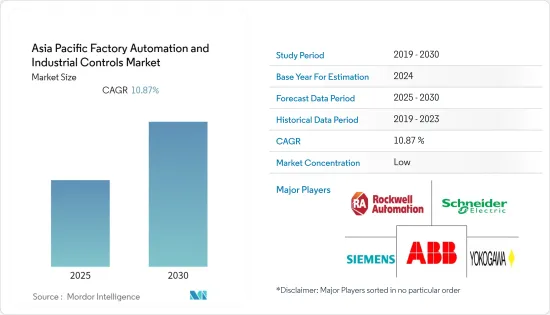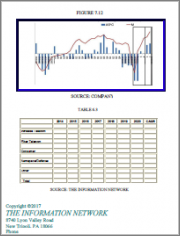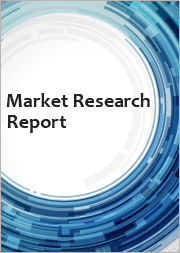
|
시장보고서
상품코드
1628748
아시아태평양의 공장 자동화 및 산업 제어 : 시장 점유율 분석, 산업 동향 및 성장 예측(2025-2030년)Asia Pacific Factory Automation and Industrial Controls - Market Share Analysis, Industry Trends & Statistics, Growth Forecasts (2025 - 2030) |
||||||
■ 보고서에 따라 최신 정보로 업데이트하여 보내드립니다. 배송일정은 문의해 주시기 바랍니다.
아시아태평양의 공장 자동화 및 산업 제어 시장은 예측 기간 동안 10.87%의 연평균 복합 성장률(CAGR)을 나타낼 것으로 예상됩니다.

주요 하이라이트
- 또한, 중국은 코로나19 팬데믹으로 인해 가장 큰 피해를 입은 국가 중 하나이며, 이번 팬데믹으로 인해 숙련된 인력 부족을 해결하고 전례 없는 상황으로 인한 워크플로우의 혼란을 피하기 위해 공장 자동화를 통해 인력을 대체할 필요성이 부각되고 있습니다. ABB에 따르면, 중국, 미국, 유럽에 기반을 둔 1,900개 건설사 중 81%가 산업용 로봇을 도입할 가능성이 있다고 답했습니다.
- 또한, 아시아태평양의 공장 자동화 및 산업 제어 시스템 시장은 다양한 산업 분야에서 프로세스 효율화와 생산 비용 절감에 중점을 두고 있는 것이 주요 요인으로 작용하고 있습니다. 제조업은 아시아태평양의 중요한 산업이며, 그 중요한 축을 담당하는 중국 경제는 인건비 상승과 전통적인 이주노동자 모델의 지속가능성 저하로 인해 급격한 변화의 시기를 맞이하고 있습니다. 이러한 추세로 인해 중국 경제는 제조 공정의 일부에 자동화를 도입하고 있습니다.
- 또한, 자동화 프로세스에 대한 통신 지원은 제조업체의 채택을 용이하게 합니다. 센서 구성 요소, 더 빠른 네트워크, 고품질 진단 소프트웨어, 높은 수준의 신뢰성과 안전한 계층적 접근이 가능한 유연한 인터페이스, 오류 수정 옵션은 생산성을 높이고 고품질 납품을 유지하며 이 지역의 제조 비용을 최소화합니다.
- 예를 들어, 미쓰비시전기와 인텔은 말레이시아에 위치한 인텔의 제조 시설을 위한 차세대 공장 자동화 시스템을 위해 협력했습니다. 이를 통해 반도체 제조 라인에서 생성되는 현장 데이터를 분석하여 운영 성능을 개선하고 에너지 절감에 기여함으로써 지속 가능한 사회를 위한 비용 절감을 실현했습니다.
- IoT가 개발, 생산 및 물류 체인 전반에 걸쳐 새로운 기술 접근 방식의 중심에 있으며, 스마트 공장 자동화로 알려진 스마트 공장 자동화는 이 지역의 산업 자동화 도입이 더욱 가속화되고 있습니다. 예를 들어, 일본 정부는 1조 3,000억 달러의 개발을 목표로 하는 '일본 재생 계획'을 승인하여 제조업을 더욱 강화하기 위한 길을 제시했으며, 2023년까지 인더스트리 4.0의 결과로 산업 부문의 기업 수익이 4,900억 달러까지 성장할 것으로 예상하고 있습니다.
아시아태평양 공장자동화 및 산업제어 시장 동향
자동차 산업이 시장 성장 견인
- 자동차 산업은 자동화 제조 시설에서 큰 비중을 차지하는 대표적인 분야 중 하나입니다. 다양한 자동차 제조업체의 생산 설비는 정확성과 효율성을 유지하기 위해 자동화되어 있는 것으로 확인되었습니다. 또한, 기존 자동차를 EV로 대체하는 추세가 증가함에 따라 자동차 산업 수요가 더욱 확대될 것으로 예상됩니다.
- 이 지역에서 자동화는 자동차 제조 현장에서는 이미 익숙한 풍경입니다. 실제로 머신비전은 자동 검사 및 공정 제어를 위한 이미지 기반 자동 검사 및 분석을 통해 자동차 제조에서 활로를 찾고 있습니다. 한편, 자동화 소프트웨어와 제어 시스템은 부품 공급부터 신차 납품까지 모든 것을 지원하고 있습니다.
- 2020년 11월, 현대자동차는 인도네시아 정부와 파트너십을 맺고 인도네시아에 첫 번째 제조 공장을 건설할 것이라고 발표했으며, 2020년 5월 1일 새로운 회사로 출범한 현대로보틱스는 새로운 시설에 산업용 로봇 팔 370대를 주문했다고 밝혔습니다. 인도네시아 수도 자카르타 근교에 위치한 현대자동차의 동남아시아 첫 번째 제조 공장은 2022년까지 건설될 예정입니다. 공장 부지면적은 77만 6,000평방미터, 생산능력은 최대 25만대입니다.
- 2020년 10월, 일본에 본사를 둔 자동차 부품 공급업체인 덴소(DENSO)는 자체 클라우드 네이티브 Factory-IoT 플랫폼을 개발하여 클라우드를 통해 전 세계 모든 공장을 연결했습니다. 이를 통해 공장은 현지 수요에 따른 생산 변경에 즉각적으로 대응할 수 있게 되었고, 생산팀은 다른 시설의 작업자 움직임과 가동 상태를 실시간으로 분석할 수 있게 되는 등 덴소의 세계 생산 시스템이 강화되었습니다.
- Smart Advanced Manufacturing and Rapid Transformation Hub(SAMARTH) Udyog Bharat 4.0 이니셔티브는 인도 제조업의 인더스트리 4.0에 대한 인식을 제고하고 이해관계자들이 스마트 제조와 관련된 과제를 해결할 수 있도록 돕는 것을 목표로 하고 있습니다.
중국이 큰 시장 점유율을 차지합니다.
- 산업용 로봇 시장을 주도해 온 중국은 아시아태평양뿐만 아니라 세계 최고의 제조업 국가로 공장 자동화의 길을 걷고 있습니다. 중국의 산업용 로봇 출하량 증가와 다양한 산업용 제어 시스템 소프트웨어의 채택은 대규모 공장 자동화를 촉진하고 있습니다.
- 제조업은 중국 경제의 한 축으로 빠르게 변화하고 있습니다. 인구 고령화와 인건비 상승으로 값싼 이주 노동자를 기반으로 한 기존 모델은 더 이상 지속 가능하지 않습니다. 또한 전 세계 컴퓨터, 통신장비, 가전제품의 70%가 중국에서 생산되고 있습니다.
- 고령화가 진행되는 중국에서는 자동화가 필요합니다. 중국 국가통계국에 따르면 중국의 생산가능인구(15-64세 인구)는 9억 9,800만 명입니다. 이 인구는 2014년부터 감소하기 시작하여 2050년에는 8억 명까지 감소할 것으로 예상됩니다.
- 중국의 산업 제어 시스템은 에너지, 교통, 물, 지자체 등 다양한 분야에서 부상하고 있습니다. 정보기술과 산업의 깊은 융합과 사물인터넷의 급속한 발전으로 네트워크화된 제어 시스템은 중국 산업 자동화의 발전 추세가 되고 있습니다.
- 공장 자동화, 공정 자동화 기술, 로봇공학을 도입한 기업의 수는 중국의 거대한 제조 기지 규모와 고용된 노동자의 수에 비해 적습니다. 이러한 추세는 중국 산업 자동화 부문의 기업들에게 큰 기회가 될 수 있습니다.
아태지역 공장 자동화 및 산업 제어 산업 개요
아시아태평양의 공장 자동화 및 산업 제어 시장은 여러 기업이 진입하면서 경쟁이 치열합니다. 진출기업들은 제품 개발, 파트너십, 합병, 인수 등의 전략적 활동에 참여하고 있습니다. 시장의 주요 발전은 다음과 같습니다.
- 2021년 4월 - 산업용 로봇 제조 스타트업 유아이봇(Youibot)이 소프트뱅크벤처스 아시아(SoftBank Ventures Asia)가 주도하는 1,547만 달러의 투자 유치를 완료했습니다. 이 회사는 연간 매출의 80%를 중국에서 벌어들이고 있으며, 조달한 자금은 연구개발에 사용할 계획입니다.
- 2021년 3월-Singapore Telecommunications와 현대자동차가 현대자동차그룹 이노베이션 센터 싱가포르(Hyundai Motor Group Innovation Centre Singapore.)의 제조 플랫폼을 위한 5G 지원 스마트 팩토리 이용 사례 공동 개발 스마트 팩토리 이용 사례를 공동 개발하는 MoU를 체결했습니다.
- 2021년 2월 - 미쓰비시전기가 나고야 공장 내에 산업용 메카트로닉스 시스템 제조소를 설립한다고 발표했습니다.
기타 혜택
- 엑셀 형식 시장 예측(ME) 시트
- 3개월간의 애널리스트 지원
목차
제1장 서론
- 조사의 전제조건과 시장 정의
- 조사 범위
제2장 조사 방법
제3장 주요 요약
제4장 시장 인사이트
- 시장 개요
- 산업 밸류체인 분석
- 산업 매력 - Porter의 Five Forces 분석
- 공급 기업의 교섭력
- 소비자의 교섭력
- 신규 진출업체의 위협
- 대체품의 위협
- 경쟁 기업간 경쟁 관계
- COVID-19산업에 대한 영향 평가
제5장 시장 역학
- 시장 성장 촉진요인
- 엄격한 에너지 효율 기준 개시와 현지 생산 추진
- 시장이 해결해야 할 과제
- 무역마찰과 금융 시책 긴축
제6장 시장 세분화
- 유형별
- 산업 제어 시스템
- 분산형 제어 시스템(DCS)
- PLC(프로그래머블·로직·컨트롤러)
- SCADA(모니터링 제어·데이터 수집)
- 제품수명주기관리(PLM)
- 휴먼 머신 인터페이스(HMI)
- 제조 실행 시스템(MES)
- 통합 기간 업무 시스템(ERP)
- 기타 산업 제어 시스템
- 필드 기기
- 머신 비전 시스템
- 로봇 공학(산업용)
- 센서와 트랜스미터
- 모터&드라이브
- 기타 필드 디바이스
- 산업 제어 시스템
- 최종사용자 산업별
- 석유 및 가스
- 화학제품 및 석유화학제품
- 전력 및 유틸리티
- 식품 및 음료
- 자동차
- 제약
- 기타
- 국가별
- 중국
- 인도
- 일본
- 한국
- 기타 아시아태평양
제7장 경쟁 구도
- 기업 개요
- Schneider Electric SE
- Rockwell Automation Inc.
- Emerson Electric Company
- Yokogawa Electric Corporation
- ABB Ltd.
- Siemens AG
- Mitsubishi Electric Corporation
- Honeywell International Inc.
- Omron Corporation
- Yaskawa Electric Corporation
제8장 투자 분석
제9장 시장의 미래
LSH 25.01.21The Asia Pacific Factory Automation and Industrial Controls Market is expected to register a CAGR of 10.87% during the forecast period.

Key Highlights
- Moreover, with China being one of the worst-hit countries in the COVID 19 outbreak, the pandemic has also highlighted the need for factory automation to replace labor to deal with a skilled labor shortage and avoid disruption in the workflow due to the unprecedented nature of the situation. According to ABB, 81% of companies amongst 1,900 construction firms based in China, the United States, and Europe surveyed are likely to adopt industrial robots.
- Furthermore, the Asia-Pacific factory automation and industrial control systems market is primarily driven by the increased focus on enhancing process efficiencies and reducing the cost of production across various industry verticals. Manufacturing serves as a significant industry in Asia-Pacific and China's economy being a significant contributor is undergoing a rapid transformation as labor costs have risen and the conventional model of migrant workers has lost the sustainability. Such trends have pushed the economy to adopt automation as a part of their manufacturing processes.
- Moreover, the communications support for automated processes have facilitated easier adoption among the manufacturers. Sensor components, faster networks, quality diagnostic software, and flexible interfaces with high levels of reliability and secured hierarchical access, along with error-correction options have added productivity, continued quality deliveries, and minimized the cost of manufacturing in the region.
- For instance, the collaboration between Mitsubishi Electric and Intel on the next-generation factory automation system for Intel's manufacturing facility in Malaysia; This has enabled field data generation from semiconductor manufacturing lines to be analyzed for improving operational performance and contribute to energy savings, thereby, cost savings toward a sustainable society.
- With IoT at the center of new technological approaches for development, production, and the entire logistics chain, otherwise known as smart factory automation, has further driven the adoption of industrial automation in the region. For instance, the Japanese government approved a plan known as the 'Rebirth of Japan,' which outlines the route towards strengthening the manufacturing sector further by targeting the development of USD 1.3 trillion. It is expected that, by 2023, companies in the industrial sector could grow revenues by as much as USD 490 billion as a result of Industry 4.0.
APAC Factory Automation and Industrial Controls Market Trends
Automotive Industry to Drive the Market Growth
- The automotive industry is one of the prominent sectors that hold a significant share in automated manufacturing facilities. It is observed that the production facilities of various automakers are automated to maintain accuracy and efficiency. Further, the growing trend of replacing conventional vehicles with EVs is expected to further augment the automotive industry's demand.
- Automation, in the region, is currently no stranger to automotive shop floors. In fact, Machine Vision has found a way in the automotive making by carrying out imaging-based automatic inspection and analysis for automatic inspection and process control. Whereas automation software and control systems have been supporting everything from component supply to the delivery of new vehicles.
- In November 2020, Hyundai Motors announced a partnership with the Indonesian government to build its first manufacturing plant in the country. Hyundai Robotics launched as a new company on May 1st, 2020, mentioned that the order is for 370 industrial robotic arms for the new facility. Located near Jakarta, Indonesia's capital city, Hyundai Motors' first manufacturing plant in Southeast Asia is anticipated to be built by 2022. The plant is being constructed in an area of 776,000 sq m, with a manufacturing capacity of up to 250,000 cars.
- In October 2020, DENSO, a Japan based automotive supplier developed its own cloud-native Factory-IoT platform, to connect all its factories around the world via cloud, this has strengthened DENSO's global production system, by enabling factories to respond immediately to production changes based on local demand, and allow production teams to conduct real-time analysis of the movement of workers and operation statuses of different facilities.
- The Smart Advanced Manufacturing and Rapid Transformation Hub (SAMARTH) Udyog Bharat 4.0 initiative aims at enhancing awareness about Industry 4.0 within the Indian manufacturing industry and help stakeholders address challenges related to smart manufacturing.
China to Hold Significant Market Share
- China has led the industrial robot market, which has driven its way to factory automation in the region and is one of the leading manufacturing countries in the Asia-Pacific region and globally. The increase in shipment of industrial robots in the country and the adoption of various Industrial Control System software across the country facilitates factory automation at scale.
- Manufacturing is one of the pillars of China's economy and is undergoing a rapid transformation. As the population ages, along with rising labor costs, the legacy model based on inexpensive migrant workers is no longer sustainable. Moreover, 70% of the world's computers, communication equipment, and consumer electronics are made in China.
- The country's aging population necessitates automation. According to China's National Bureau of Statistics, the country's working-age population, people aged between 15 and 64 years, is 998 million. The decline in this population started in 2014, and is expected to drop as low as 800 million by 2050.
- The industrial control system in the country has emerged across various fields, like the energy, transportation, water, and municipal sectors. Due to the deep integration of information technology and industry and the rapid development of the Internet of Things, the networked control system is becoming the development trend of industrial automation in China.
- The number of companies deploying factory and process automation technologies and robotics in the country is less when compared to the enormous size of China's manufacturing base and the number of workers it employs. This trend presents a great opportunity for companies in the industrial automation sector in China.
APAC Factory Automation and Industrial Controls Industry Overview
The Asia Pacific factory automation and industrial controls market is competitive due to several players in the market. Players are involved in product development and strategic activities such as partnerships, mergers, and acquisitions. Some of the key developments in the market are:
- April 2021 - Youibot, a start-up company that makes industrial robots, closed an investment of USD 15.47 million in the funding round led by SoftBank Ventures Asia alongside others. The company generates 80% of its annual revenue in China and has plans to spend the raised funds on research and development.
- March 2021 - Singapore Telecommunications and Hyundai Motor Company entered into an MoU to collaborate and develop a 5G-enabled smart factory use case for the manufacturing platform of Hyundai Motor Group Innovation Centre Singapore.
- February 2021 - Mitsubishi Electric announced the establishment of Industrial Mechatronics Systems Works within the premises of the company's Nagoya Works in Nagoya, Japan.
Additional Benefits:
- The market estimate (ME) sheet in Excel format
- 3 months of analyst support
TABLE OF CONTENTS
1 INTRODUCTION
- 1.1 Study Assumptions and Market Definition
- 1.2 Scope of the Study
2 RESEARCH METHODOLOGY
3 EXECUTIVE SUMMARY
4 MARKET INSIGHTS
- 4.1 Market Overview
- 4.2 Industry Value Chain Analysis
- 4.3 Industry Attractiveness - Porter's Five Forces Analysis
- 4.3.1 Bargaining Power of Suppliers
- 4.3.2 Bargaining Power of Consumers
- 4.3.3 Threat of New Entrants
- 4.3.4 Threat of Substitutes
- 4.3.5 Intensity of Competitive Rivalry
- 4.4 Assessment of Impact of COVID-19 on the Industry
5 MARKET DYNAMICS
- 5.1 Market Drivers
- 5.1.1 Launch of Stringent Energy Conservation Standards and Drive for Local Manufacturing
- 5.2 Market Challenges
- 5.2.1 Trade Tensions and Monetary Policy Tightening
6 MARKET SEGMENTATION
- 6.1 By Type
- 6.1.1 Industrial Control Systems
- 6.1.1.1 Distributed Control System (DCS)
- 6.1.1.2 PLC (Programmable Logic Controller)
- 6.1.1.3 Supervisory Control and Data Acquisition (SCADA)
- 6.1.1.4 Product Lifecycle Management (PLM)
- 6.1.1.5 Human Machine Interface (HMI)
- 6.1.1.6 Manufacturing Execution System (MES)
- 6.1.1.7 Enterprise Resource Planning (ERP)
- 6.1.1.8 Other Industrial Control Systems
- 6.1.2 Field Devices
- 6.1.2.1 Machine Vision Systems
- 6.1.2.2 Robotics (Industrial)
- 6.1.2.3 Sensors and Transmitters
- 6.1.2.4 Motors and Drives
- 6.1.2.5 Other Field Devices
- 6.1.1 Industrial Control Systems
- 6.2 By End-user Industry
- 6.2.1 Oil and Gas
- 6.2.2 Chemical and Petrochemical
- 6.2.3 Power and Utilities
- 6.2.4 Food and Beverages
- 6.2.5 Automotive
- 6.2.6 Pharmaceutical
- 6.2.7 Other End-user Industries
- 6.3 By Country
- 6.3.1 China
- 6.3.2 India
- 6.3.3 Japan
- 6.3.4 South Korea
- 6.3.5 Rest of Asia pacific
7 COMPETITIVE LANDSCAPE
- 7.1 Company Profiles
- 7.1.1 Schneider Electric SE
- 7.1.2 Rockwell Automation Inc.
- 7.1.3 Emerson Electric Company
- 7.1.4 Yokogawa Electric Corporation
- 7.1.5 ABB Ltd.
- 7.1.6 Siemens AG
- 7.1.7 Mitsubishi Electric Corporation
- 7.1.8 Honeywell International Inc.
- 7.1.9 Omron Corporation
- 7.1.10 Yaskawa Electric Corporation
8 INVESTMENT ANALYSIS
9 FUTURE OF THE MARKET
샘플 요청 목록



















